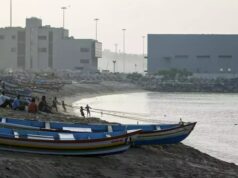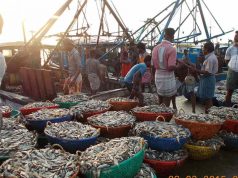Maharashtra is the third largest state of India in terms of land area. The diverse landscape of Maharashtra includes the vast Deccan Plateau, the biodiversity-rich forests of Vidarbha and Western Ghats along with the beautiful Konkan strip. Its diverse topography supports different methods of agriculture, and a diverse culture while being of historical importance. In the middle of all this beauty there is a severe problem that looms: Lack of water. But is that really the case? To find out why this may be so, it’s worth looking at the larger water crisis taking place in the state of Maharashtra.
Every year newspapers and media channels are flooded with news on water crises that highlight that matters are becoming worse each year. On the surface one can say that it is because of climate change but in reality, that may just be one reason. Maharashtra’s water crisis can be understood better by studying policy blunders of the past that have resulted in an unplanned concretisation of the state.
Forests play an important role in the overall ecosystem by helping to maintain the water cycle and preventing erosion of soil. In March 2022, the state’s declared forest area was 61,907 square kilometres, or roughly 20% of its total geographical area. However, the real forest cover was just 16.5% which is well below the target 33% set by the National Forest Policy. This has made Maharashtra more vulnerable to climate change than ever before.
The Jalyukt Shivar Abhiyan was aimed to make Maharashtra ‘drought-proof’ by 2019. It proposed various soil and water conservation activities. But according to CAG’s 2020 report, even after ten years and spending Rs 9,630 crore, the scheme could provide water storage and irrigation potential that can at best provide water to just 487 persons for one year. It’s worth being critical of not just its poor performance but also how it encouraged farmers to grow more water intensive cash crops like sugarcane from the water it managed to store in tanks and reservoirs (Down to Earth). This had a major adverse impact on groundwater levels. The Groundwater Survey and Development Agency (GSDA) reported that between 2014 and 2019, the water levels dropped 1-3 metres in villages across 245 talukas of Maharashtra. This scheme is also an example of Milton Friedman’s Law of Spending. It shows how different persons have different incentives that determine how money is spent. Overall it can be inefficient and wasteful when using a third person’s funds for another as it does not incentivise the spender to economise or seek the highest value.
There is another problem at play. Water tables are typically much lower in plateaus than in plains. Hence, when water levels drop below acceptable levels, heavy drilling machines are needed to dig borewells. Subsidies given out by Maharashtra, encourage people to dig borewells deeper than sustainable, making matters worse to maintain the water tables in plateaus. Other measures like water based cropping patterns, and community-led demand-side interventions are missing too, making the water crisis severe, demanding immediate policy interventions.
Insight from journalist Henry Hazlitt can guide how these policies get framed. He was of the view that while studying any policy, it’s important we look at its long-term effects, not just immediate effects. There should be due diligence done before the policy is implemented. Continuous feedback from people is also important. Something pointed out by Barun Mitra who talks about how while analysing policy, it is important to think like citizens, not just as experts.
Water is a natural resource, but the crisis we are facing today is manmade. It’s possible to fight it and work towards a sustainable future.
References:
- Water Conservation and Saving in Agriculture, 2019, Government of Maharashtra, link
- Chittaranjan Tembhekar, “Maharashtra’s forest cover expands, but way short of 33% tar”, March 9, 2023, Times of India, link.
- “Securing water in a time of climate change through natural ecosystems
management: A report to tackle Maharashtra’s water crisis”, June 12, 2024, The Hindu, link - Lokeshwarri SK, Parvathi Benu, “Are southern States justified in opposing the revenue-sharing model?”, February 19, 204, Hindu Business Line, link
- Barun Mitra, “Key to India’s Prosperity”, Manthan India, link
Post Disclaimer
The opinions expressed in this essay are those of the authors. They do not purport to reflect the opinions or views of CCS.





